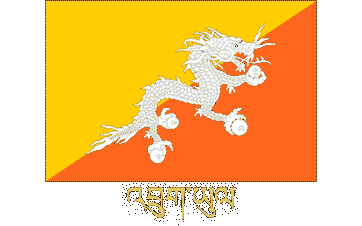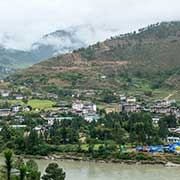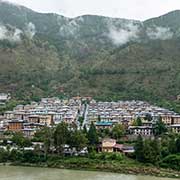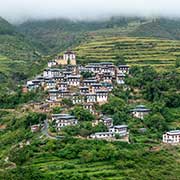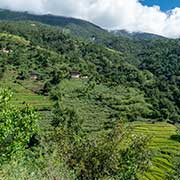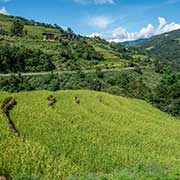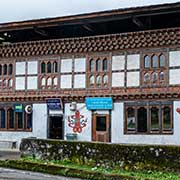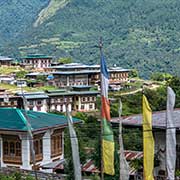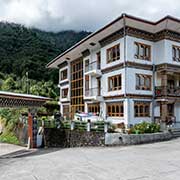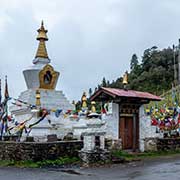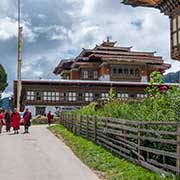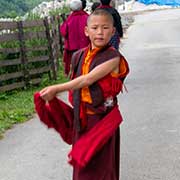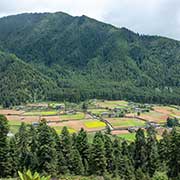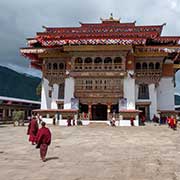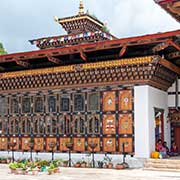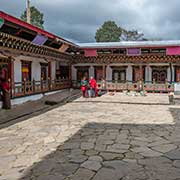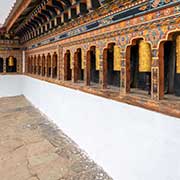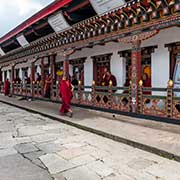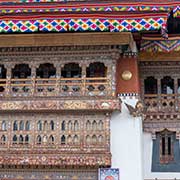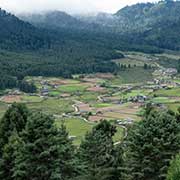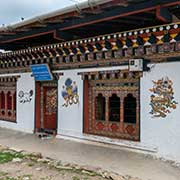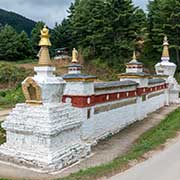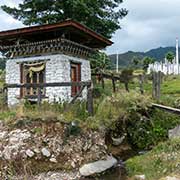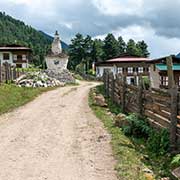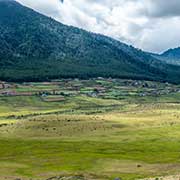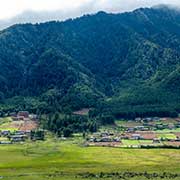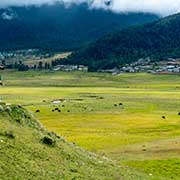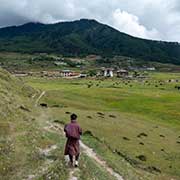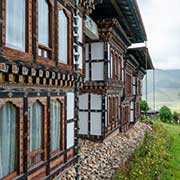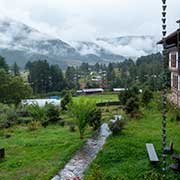Photos of Wangdue Phodrang, Central Bhutan
Wangdue Phodrang, Central Bhutan
The Wangdue Phodrang Dzongkhag is the largest district in central Bhutan. Its name means “Unification Palace” and is named after the Wangdue Phodrang Dzong, built in 1638 by Ngawang Namgyal, the first ruler of a unified Bhutan. The Dzong, a Buddhist monastery and fortress, overlooks the convergence of the rivers Dang Chhu and Punatsang Chhu. It was burnt down while being renovated on 24 June 2012. Fortunately, most historical relics were in storage, and the monastery has been rebuilt.
you may then send it as a postcard if you wish.
Across the Punatsang Chhu (in Thimphu District) is Rinchengang Lhakhang, the Buddhist temple built on a hill above the village with the same name over 500 years ago but renovated in 1996. North of the Dzong is the newly built town of Bajo. A good road leads from Wangdue Phodrang Dzong via rice terraces to the village of Nobding (or Nubding); from there, across the Lawa La pass of 3,340-metre altitude, marked with a large Chorten and Buddhist prayer flags, the road leads another five kilometres to Gongtey village and the Gangteng Gonpa, or Gantey Monastery.
The Gangteng Gonpa is a monastery of the Nyingmapa school of Tibetan Buddhism, the main seat of the Pema Lingpa tradition. The monastery, at an altitude of 3,500 metres, overlooks the Phobjika Valley. It was established in 1613 and completely renovated and restored between 2002 and 2008. The impressive Tsokhang, the main hall, is built in Tibetan style. There are various temples, rows of large prayer wheels, and the monks’ quarters, all buildings with beautiful woodcarvings and traditional paintwork.
The Phobjikha Valley, below the Gangteng Monastery, is a beautiful valley at about 3,000 metres, enclosed by mountain ranges. There is a scenic Nature Trail with rice fields and village views. The globally threatened black-necked crane (Grus nigricollis) visits the Phobjikha valley during the winter season to roost It breeds on the Tibetan Plateau and remote parts of India and Bhutan and is revered in Buddhist tradition. On arrival in the Phobjikha Valley in the last week of October, the black-necked cranes circle the Gangteng Monastery three times and do the same while returning to Tibet. There is a Black-necked crane Visitor Centre with detailed information and full-size statues of the birds.


